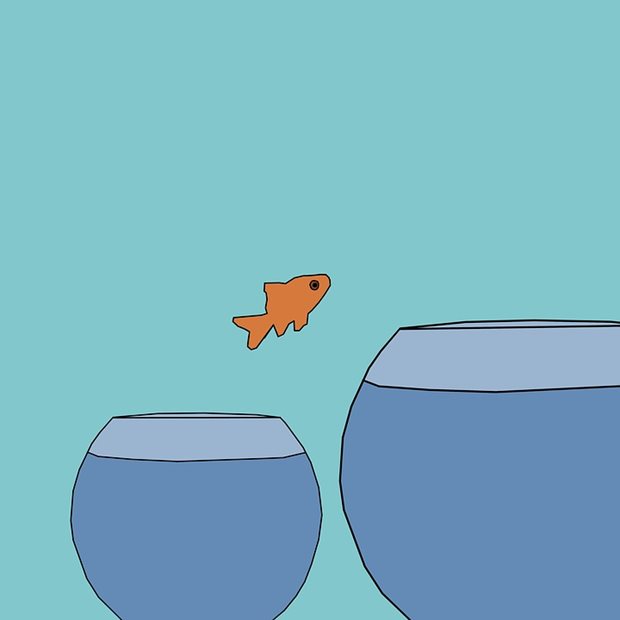Growing Together in Child Therapy: Enlivening Interactions and Mutual Change
-
-
Tamsin Cottis
We tend to focus on how therapy changes clients. But what about how it changes us, as therapists? To celebrate Children’s Mental Health Week 2022, with its theme of ‘Growing Together’, leading child psychotherapist Tamsin Cottis reflects on therapy as a dynamic two-way process, as she shares how one isolated young client’s interest in swimming became the key to a mutually enlivening encounter.

Increasingly sophisticated photo-imaging enables us to see brain activity being stimulated, as humans interact live. We know now that the brain is plastic and that relationships are dynamic and mutually affective. Additionally, the psychodynamic experience of transference and countertransference (i.e. affective, sometimes unconscious experiences which can, when explored, inform the therapeutic relationship) mean that both client and therapist – in the moment-by-moment therapy process – are open and liable to change.
Free Online Conference - The Developing Mind: Building trust, growth & resilience together
With experts Dr Fonagy, Dr Siegel & others
Emily, a white British girl of 14, was referred to me for therapy by her school. She did well academically but seemed anxious, withdrawn and socially awkward, apparently with no friends. An assessment for autism had been inconclusive.
Initially, Emily found it difficult to engage. She resisted eye contact with me, and deflected my questions about her feelings. She talked disdainfully, at length, about her classmates, detailing the ways in which she despised them: “They’re all obsessed with make-up and Love Island”, and, “Why would I even want to go to a stupid party and get drunk?!”
There were also accounts, painful for me to hear, though delivered by her in a flat voice, of being left to sit alone at lunchtime, and being excluded from several WhatsApp groups and after-school social activities.
Encouraging Emily to be more open to all her feelings, including ones of hurt and vulnerability, was difficult work. Repeatedly, I was met with her contemptuous attitudes. She was sceptical about therapy and quick to criticise me. I began to feel somewhat defensive. I often struggled to connect with her.
It seemed that other minds, with their messy emotions and irrational behaviour, were mystifying and somewhat scary for Emily. Her sense of social isolation affected her self-confidence. These feelings risked being projected onto her peers and me. She was missing out on the chance for enjoyable contact with others. I wanted to find ways to soften the dynamic between us.
Emily told me she was an able swimmer. She had left her local club saying, “Everyone just talks about who they fancy, the whole time”. But she had remained interested in the progress of her favourite national and international champion swimmers, and was part of an online group that shared information, stats and fan-chat about the sport. This was an unknown world to me, but as Emily talked about it more, I saw a light in her eyes and heard life in her voice. I felt brighter.
I began to follow swimming news myself, so I could offer more to our conversations. Together, we began to discuss past and future swimming events with excitement, disappointment and anticipation. As we talked, I put as much feeling and expression in my voice as I felt she could tolerate. I also encouraged interest in, and discussion of, the swimmers’ personalities: who was ultra-competitive, who a good team player; who showed their feelings, who kept them in. In this way, I felt we were also exploring, indirectly, some of the vagaries of human behaviour which were so confusing to Emily.
I began to look forward to our sessions, though in supervision I shared my doubts that talking about swimming was ‘actually therapy’. My supervisor reassured me, “She’s more relaxed. It’s a chance for her to practice having two-way conversations”. Drawing on Anne Alvarez’s ideas (1992) about the therapist as an ‘enlivener,’ I saw it as part of my role to help create a livelier, more interactive dynamic between us. Although direct conversations about her own feelings remained difficult for Emily, we both became more at ease with each other. I came to enjoy the sessions and the company of Emily herself and was pleased when she began to take one or two online swimming friendships tentatively, but successfully, into the offline world.
The work with Emily increased my confidence in the power of relationship as a tool of healing; to more deeply appreciate the therapeutic benefits of positive interactions and to look more carefully, in sessions, for the ‘light in the eyes’ of a young client, especially one who may be hard to reach.
Free Online Conference - The Developing Mind: Building trust, growth & resilience together
With experts Dr Fonagy, Dr Siegel & others